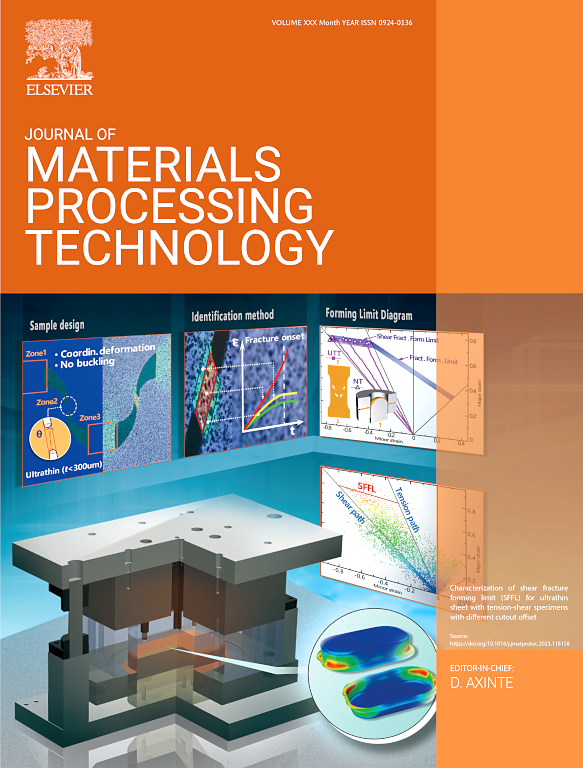Towards understanding the structure-property evolution mechanisms in wrought-to-printed and printed-to-printed linear friction welded Ti alloy near net blanks for aerospace applications
IF 6.7
2区 材料科学
Q1 ENGINEERING, INDUSTRIAL
Journal of Materials Processing Technology
Pub Date : 2025-02-04
DOI:10.1016/j.jmatprotec.2025.118756
引用次数: 0
Abstract
The near-net manufactured (NNM) blanks from linear friction welding (LFW) can significantly enhance the buy-to-fly ratio of critical Ti-alloy components for critical space, and energy applications. The severe limitations of the laser powder bed fusion, which include the limited build volume and lower material deposition rates, can be simultaneously addressed by near-net manufacturing for critical space applications that require large-sized complex parts with finer resolutions. A systematically coupled experimental and numerical investigation is presented here for the first time to reveal the feasibility of LFW for the manufacturing of novel near-net blanks in wrought-to-printed and printed-to-printed combinations. Results show that the microstructure and mechanical property evolution in the weld zone of both joints is nearly identical due to dynamic re-crystallization. However, the thermo-mechanically affected zones (TMAZ) in printed specimens exhibited the lowest hardness due to globularized needles. In contrast, the TMAZ of wrought specimen hardness increases considerably towards the weld interface due to the deformed and intact bi-modal microstructure. The proposed heat transfer model coupled with the kinetic model is sensitive enough to predict the measured hardness distribution with a maximum error of 5 %. Further, attempt to empirically relate the hardness with the corresponding yield and ultimate tensile strengths of the joints deemed appropriate for five different welding processes from five independent literature. Overall, printed-to-printed and wrought-to-printed joints exhibited excellent synergy between strength and ductility with improved elongation of 14 % and 164 %, respectively due to the closure of micropores in the printed specimen.
求助全文
约1分钟内获得全文
求助全文
来源期刊

Journal of Materials Processing Technology
工程技术-材料科学:综合
CiteScore
12.60
自引率
4.80%
发文量
403
审稿时长
29 days
期刊介绍:
The Journal of Materials Processing Technology covers the processing techniques used in manufacturing components from metals and other materials. The journal aims to publish full research papers of original, significant and rigorous work and so to contribute to increased production efficiency and improved component performance.
Areas of interest to the journal include:
• Casting, forming and machining
• Additive processing and joining technologies
• The evolution of material properties under the specific conditions met in manufacturing processes
• Surface engineering when it relates specifically to a manufacturing process
• Design and behavior of equipment and tools.
 求助内容:
求助内容: 应助结果提醒方式:
应助结果提醒方式:


